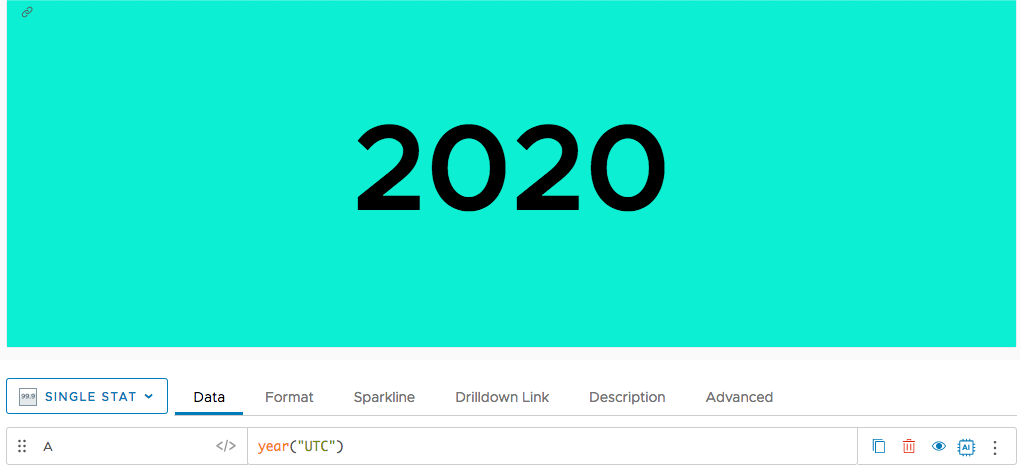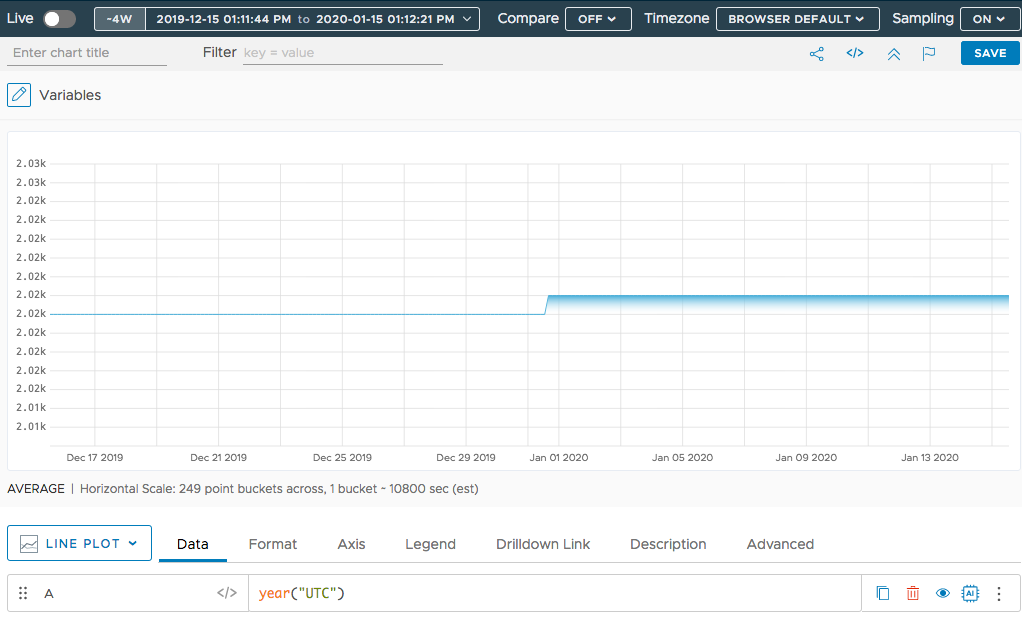Summary
year(<timeZone> [,<tsExpression])
Returns the year in the specified time zone.
Parameters
| Parameter | Description |
|---|---|
| timeZone |
String identifier or alias for a time zone, such as "US/Pacific". Names are case sensitive and must be enclosed in quotes. For a list of valid time zone identifiers and their aliases, see http://joda-time.sourceforge.net/timezones.html.
|
| tsExpression | Optional expression to which you want to apply this function. |
Description
The year() standard time function returns the year in the specified time zone, represented as a 4-digit number in the Gregorian calendar.
The returned values are plotted against the times shown on the x-axis. The returned series is generally a straight line, unless you are looking at a chart that includes times around 12:00am on January 1.
year() automatically adjusts its return values for daylight savings time.
year() is particularly useful when you want to define an alert that fires only during a specific year or range of years. For example, you could use an expression such as year("US/Pacific")=2018 in an alert condition to ensure that the alert fires only during the year 2018 Pacific Time, and stops firing at the end of that year.
Examples
Example: Showing Years
This chart shows live data, so year("UTC") shows the current year in Coordinated Universal Time. Notice that the year is displayed in SI units (2.018k) on this particular y-axis. For details on SI units, see Wikipedia or a similar source.

If we set a custom date for the chart from December to May, the series returned by year("UTC") shows the change in year.
